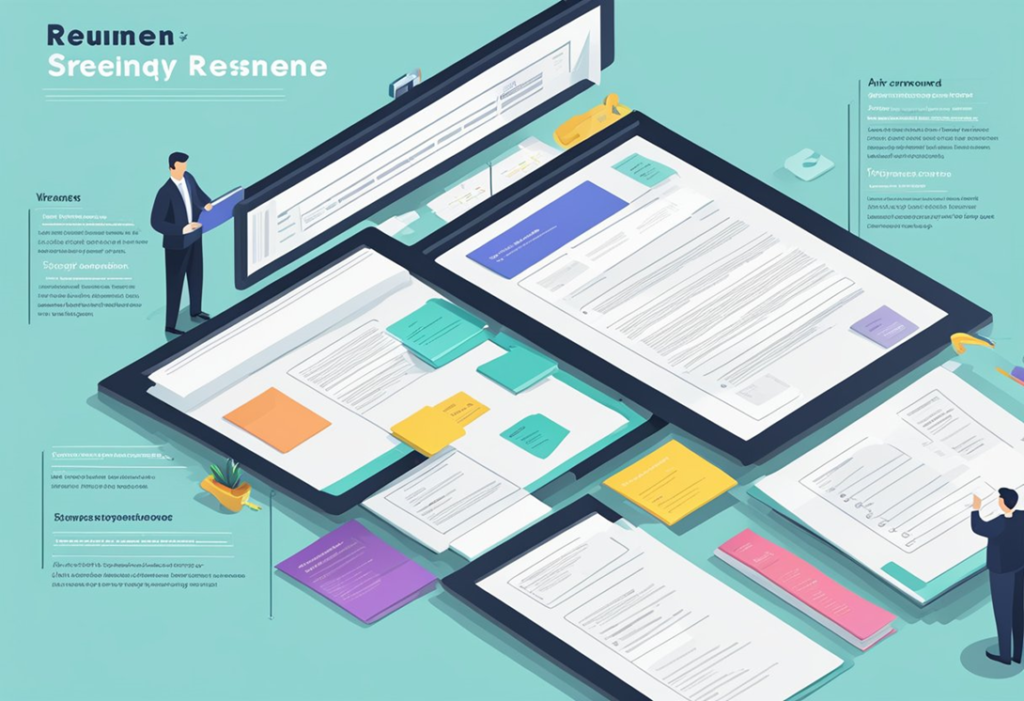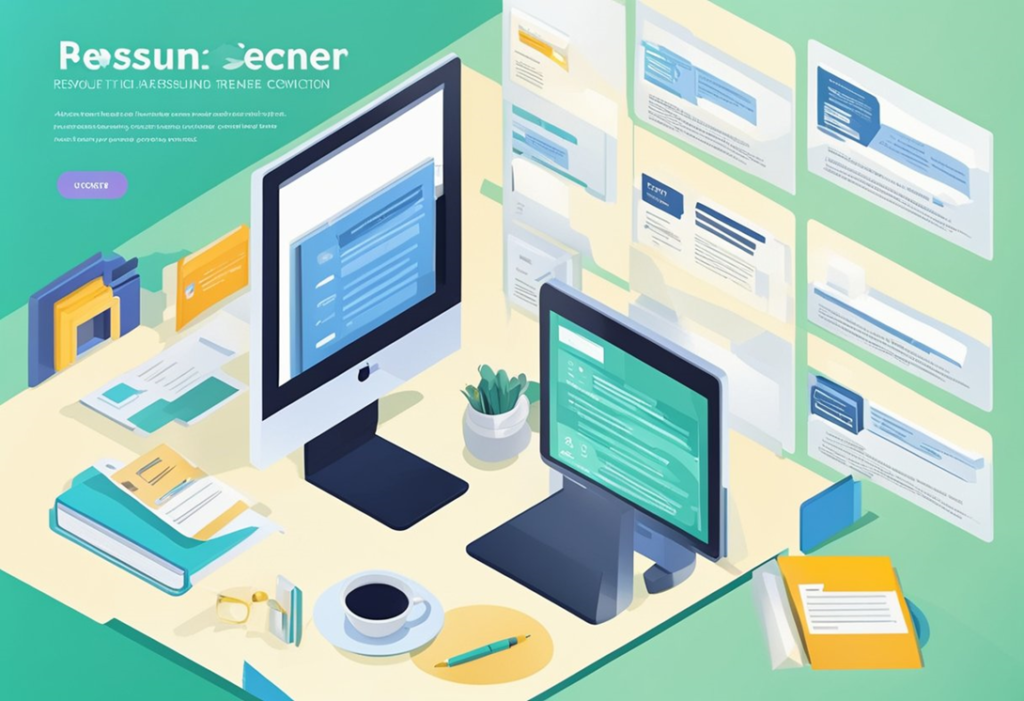
Interview Techniques: Mastering the Art of Professional Conversations
Job interviews can be nerve-wracking, but they don’t have to be. With the right preparation, you can walk into any interview feeling confident and ready to showcase your skills. Knowing common interview questions and how to answer them is key to making a great impression on potential employers. Getting ready for an interview involves more…
LinkedIn Profile Optimization: Enhance Your Professional Visibility and Opportunities
Optimizing your LinkedIn profile can significantly enhance your visibility and open up numerous professional opportunities. A well-optimized profile attracts connections and potential employers, increasing your chances of being noticed in a competitive job market. By focusing on key elements like your headline, summary, and experience, you can create a compelling personal brand that resonates with…
Cover Letter Tips: Crafting an Effective Introduction to Your Job Application
A well-crafted cover letter is your chance to make a strong first impression on potential employers. A cover letter should highlight your skills and experiences while showing why you are the right fit for the job. It is more than just a formality; it can set you apart from other candidates applying for the same…
ATS-Friendly Resume: Optimizing Your Application for Success
Are you struggling to get your resume noticed by potential employers? With the increasing use of Applicant Tracking Systems (ATS), it’s important to ensure that your resume is ATS-friendly. An ATS is a software application used by employers to manage the recruitment process, which includes screening resumes to identify the most qualified candidates for a job.
Writing a resume that can successfully pass through an Applicant Tracking System (ATS) is key to securing the job you want. An ATS-friendly resume ensures your qualifications are seen by hiring managers. This is crucial in today’s job market where many companies use ATS to filter applicants.

An ATS-friendly resume is one that is optimized for the software to recognize and parse the information correctly. This means using the right formatting, keywords, and phrases to ensure that your resume makes it through the initial screening process and into the hands of a human recruiter. In this article, we’ll explore the key elements of an ATS-friendly resume and provide tips on how to make sure your resume stands out to both the software and the hiring manager.
Understanding ATS-Friendly Resumes

When it comes to job applications, your resume is often the first thing that recruiters and hiring managers see. However, did you know that many companies use an Applicant Tracking System (ATS) to screen resumes before they even reach human eyes?
An ATS is a software program that scans resumes for specific keywords and phrases related to the job description. If your resume doesn’t match the criteria set by the ATS, it may not make it to the next round of the hiring process.
To create an ATS-friendly resume, you need to make sure that it is properly formatted and optimized for the software. This includes using standard fonts, avoiding graphics and images, and including relevant keywords throughout your resume.
One way to ensure that your resume is ATS-friendly is to tailor it to each job application. This means customizing your resume to match the specific job description and using keywords and phrases that are relevant to the position.
By creating an ATS-friendly resume, you increase your chances of making it through the initial screening process and getting your foot in the door for a job interview. Keep these tips in mind when crafting your resume and you’ll be on your way to landing your dream job.
Key Components of an ATS-Friendly Resume

When creating an ATS-friendly resume, there are several key components that you should include to ensure that your resume is optimized for both human and machine readers. The following sections are essential to include in your ATS-friendly resume:
Contact Information
Your contact information should be prominently displayed at the top of your resume. This includes your full name, phone number, email address, and location. Make sure that your email address is professional and easy to read, and avoid using any nicknames or personal email addresses.
Professional Summary
Your resume summary or objective should be a brief statement that highlights your skills, experience, and career goals. This section should be tailored to the specific job you are applying for, and should include relevant keywords that will help your resume rank higher in ATS searches.
Work Experience
Your professional experience section should include your work history, starting with your most recent job. Use bullet points to list your responsibilities and achievements, and include relevant keywords that will help your resume rank higher in ATS searches. Make sure to quantify your achievements whenever possible, using numbers and percentages to demonstrate your impact.
Skills Section
Your skills section should be a list of your key skills and abilities, and should include both hard and soft skills. Use bullet points to make this section easy to read, and include relevant keywords that will help your resume rank higher in ATS searches.
Education
Your education section should include your highest degree or level of education, as well as any relevant certifications or training programs. Make sure to include the name of the institution, the degree or certification earned, and the date of graduation.
By including these key components in your ATS-friendly resume, you can increase your chances of getting noticed by both human and machine readers. Make sure to use clear and concise language, and avoid any unnecessary formatting or graphics that could confuse the ATS. With a well-optimized resume, you can showcase your skills and experience in the best possible light and land your dream job.
Formatting Your Resume for ATS

When it comes to formatting your resume for ATS, there are a few key things to keep in mind. By following these guidelines, you can increase your chances of getting past the ATS and into the hands of a human recruiter.
Simple Formatting
First and foremost, keep your resume formatting simple. Stick to a basic, easy-to-read font like Arial or Times New Roman, and avoid using fancy fonts or graphics that may confuse the ATS. Use standard section headings like “Experience” and “Education,” and keep your bullet points short and to the point.
Appropriate Fonts
The font you choose for your resume can have a big impact on how well it’s read by an ATS. Stick to simple, easy-to-read fonts like Arial or Times New Roman, and avoid using fancy or decorative fonts that may not be recognized by the ATS. Keep your font size between 10 and 12 points, and use bold and italic formatting sparingly to draw attention to important details.
Bullet Points Usage
Bullet points are an effective way to highlight your skills and accomplishments on your resume. When using bullet points, make sure to keep them short and to the point. Use action words like “managed,” “developed,” and “implemented” to showcase your achievements, and avoid using vague or generic phrases like “responsible for” or “worked on.”
By following these guidelines, you can ensure that your resume is formatted in a way that’s easy for an ATS to read and understand. With a little bit of effort and attention to detail, you can increase your chances of getting noticed by a human recruiter and landing your dream job.
Optimizing Keywords for ATS

When it comes to writing an ATS-friendly resume, identifying relevant keywords is crucial. These are the words that the ATS will be looking for in your resume, so it’s important to make sure that you include them in your document.
To identify relevant keywords, start by carefully reading the job description. Look for the skills, qualifications, and experience that the employer is looking for and make note of the specific words and phrases used. You can also use online tools to help you identify relevant keywords for your industry or job title.
Once you have identified the relevant keywords, make sure to include them in your resume. Use them in your job titles, bullet points, and skills section. However, be careful not to overuse them or use them in an unnatural way. Your resume should still read like a human wrote it, not a robot.
Keyword Placement
In addition to identifying relevant keywords, it’s also important to consider where you place them in your resume. The ATS will be looking for keywords in specific sections of your document, so you want to make sure that you are placing them in the right places.
The most important section to include keywords is in your work experience section. Use keywords in your job titles and bullet points to describe your experience and accomplishments. You can also include keywords in your skills section and education section.
However, be careful not to stuff your resume with too many keywords. This can actually hurt your chances of getting past the ATS. Instead, focus on using keywords in a natural and strategic way.
By identifying relevant keywords and placing them strategically in your resume, you can increase your chances of getting past the ATS and getting noticed by hiring managers.
Dos and Don’ts for ATS-Friendly Resumes

Dos
When creating an ATS-friendly resume, there are a few things you should keep in mind to increase your chances of getting noticed by potential employers. Here are some dos to consider:
- Use keywords: Incorporate relevant keywords from the job description into your resume. This will help the ATS identify your skills and qualifications and match them with the job requirements.
- Keep it simple: Use a simple and clean format for your resume. Avoid using graphics, images, or complex formatting that may confuse the ATS.
- Use headings and bullet points: Use headings and bullet points to organize your resume and make it easier for the ATS to scan and read.
- Customize your resume: Customize your resume for each job application. This will help you tailor your skills and qualifications to the specific job requirements.
- Proofread: Make sure to proofread your resume for spelling and grammar errors. These errors can negatively impact your chances of getting noticed by the ATS.
Don’ts
Here are some things to avoid when creating an ATS-friendly resume:
- Don’t use fancy fonts: Stick to simple and easy-to-read fonts such as Arial, Calibri, or Times New Roman. Avoid using fancy or decorative fonts that may be difficult for the ATS to read.
- Don’t use tables or columns: Avoid using tables or columns in your resume as the ATS may have difficulty reading them.
- Don’t use abbreviations: Spell out any abbreviations or acronyms in your resume. The ATS may not recognize them, which could negatively impact your chances of getting noticed.
- Don’t use images or graphics: Avoid using images or graphics in your resume as the ATS may not be able to read them.
- Don’t forget to save your resume in the correct format: Save your resume in a plain text format such as .txt or .docx. This will ensure that the ATS can read your resume properly.
By following these dos and don’ts, you can create an ATS-friendly resume that will increase your chances of getting noticed by potential employers.